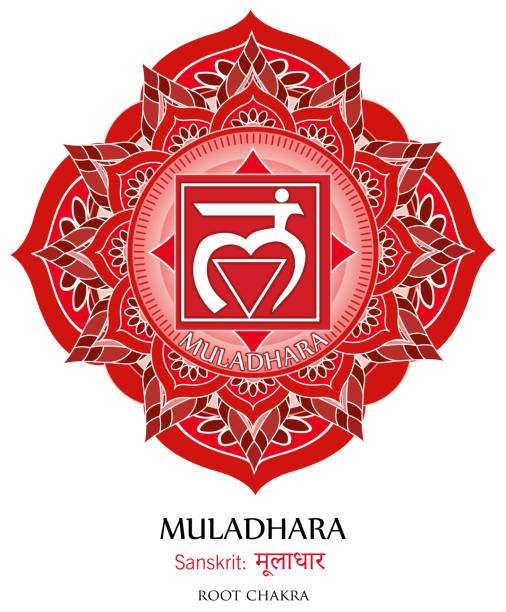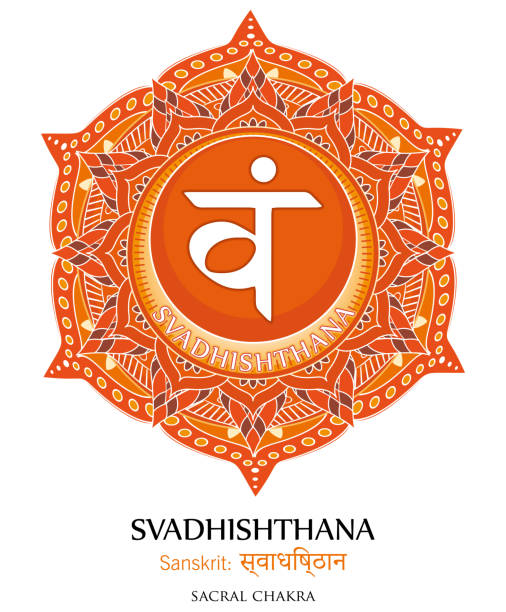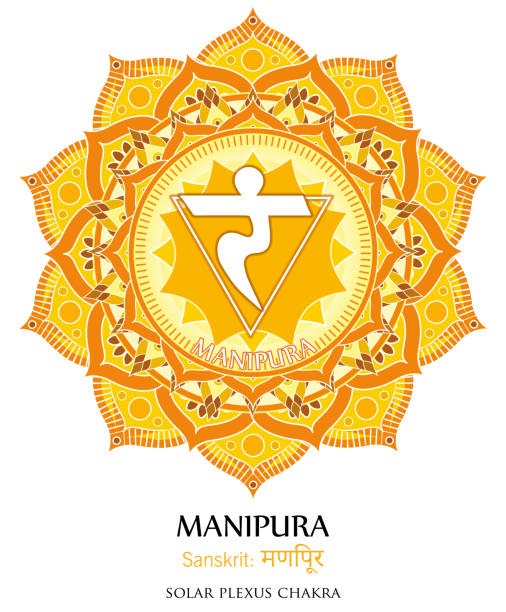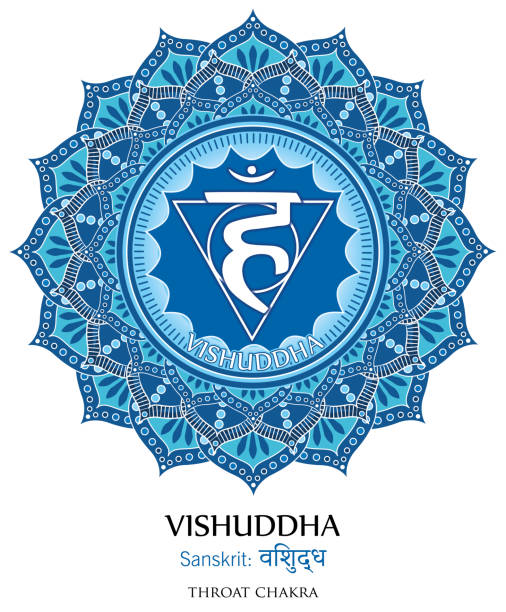Exploring the 7 Chakras: Meanings and Basics for Newcomers
May 10, 2024
Origin of the Seven Chakras

The word "chakra" is derived from the Sanskrit word meaning "wheel" or "rotation" and these energy centres are often described as spinning wheels or discs of energy. The term "seven chakras" originated in India and refers to the seven main energy points in the human meridian system, which are equivalent to the acupuncture points in Chinese medicine. Knowledge of the "seven chakras" spread to Tibet and was adopted by Tibetan Buddhism there. Contemporarily, the knowledge of the "three chakras and seven wheels" has also spread to Western countries along with movement yoga and Tibetan Buddhism, and is widely used in various body-mind theories. However, the understanding of the seven chakras varies.
Composition of the Seven Chakras

From bottom to top, they are:
- Root Chakra (Moodadhara Chakra)
- Sacral Chakra (Svadisthan Chakra)
- Solar Plexus Chakra (Nabhi/Manipura Chakra)
- Heart Chakra (Anahata Chakra)
- Throat Chakra (Vishuddhi Chakra)
- Third-Eye Chakra (Ajna Chakra)
- Crown Chakra (Sahasrara Chakra)
Where are the Chakras

Usually, it is believed that the chakras exist along the spine, from the head to the base of the spine. The number of chakras depends on the tradition a person follows. In Buddhism, there are four main chakras. Hinduism usually has seven. Other traditions believe there are thousands of energy centres, but several of them are the most important. In the West, the best known model is the seven-chakra system.
What are the Seven Chakras
-
Root Chakra (Moodadhara Chakra)

The Root Chakra, also translated as the Chakra of Purity, is Mooladahra in Sanskrit, meaning root and support. The colour of this chakra is coral red with 4 petals and its qualities are innocence and wisdom. This chakra point is the root of the entire energy system and it is located at the base of the vertebrae/perineal cervix. Physically, this chakra corresponds to the Pelvic Plexus, which takes care of our excretory system and reproductive organs. Thus, if this chakra becomes weak, we may suffer from diseases of these organs, such as colon, prostate, lower back, leg problems, or fear and anxiety about finances, or nightmares.
Location: Perineum
Colour: Red
Life Issues: survival, physical needs
Glands: reproductive glands, adrenal glands
Crystals: Smoky Quartz, Garnet, Hematite, Red Jasper, Ruby and Onyx, etc.
When this chakra is balanced, one feels healthy, energetic, secure and trusting; when this chakra is out of balance, one feels fear, insecurity, anxiety, financial difficulties, underweight.
Healing strategies (survival, security): eliminate fear, live in the moment, work hard.
-
Sacral Chakra(Svadisthan Chakra)

The Abdominal Chakra, also known as the Svadisthana Chakra, is often placed above the Root Chakra and below the Umbilical Chakra on diagrams of the body's energy system, but in fact there is no certain position for the Sacral Chakra, which rotates around the Umbilical Chakra like a satellite in the abdomen. The True Knowledge Chakra is yellow in colour and has six petals. The Chakra of True Knowledge corresponds physically to the Aortic Plexus, which governs our spleen, pancreas and lower part of the liver. The Aortic Plexus is the starting point of the Right Chakra. If a person is overactive, overthinking and planning, this Chakra and the entire Right Chakra will become heated, and prolonged overdrafting of this Chakra will cause this Chakra to become exhausted and unable to take care of the needs of the Spleen, Pancreas, and Liver, resulting in illnesses of these organs. If one's spleen is not good, one will develop cancer of the blood; if one's pancreas is not good, one will develop diabetes; if one's liver is not good, one's concentration will be weakened, and one will often feel irritable, ruminative, and unable to calm down.
Location: Dantian or Uterus
Colour: Orange
Life Issues: Sex drive and creativity
Glands: Ovaries, Testicles
Crystals: Red or orange coloured crystal ores, amber, tiger's eye.
When this chakra is balanced or opened, a person will be compassionate and have increased self-confidence. And when out of balance, one can become dependent, possessive and suffer from sexual dysfunction
Healing Strategies (Emotional and Sexual Desire): elimination of guilt, balanced emotions, healthy pleasure
-
Solar Plexus Chakra(Manipura Chakra)

The Umbilical Chakra, also known as the Chakra of the Right Path, is located in the centre of the abdomen at the place of the navel. This chakra is green in colour and has ten petals. The Umbilical Chakra corresponds in the body to the Solar [abdominal] Plexus (Solar Plexus), which governs our stomach and intestines. If a person has problems in the family or worries too much about money, he or she will develop a stomach problem, which manifests in the middle finger of the left hand. If there are career problems, it manifests in the middle finger of the right hand. If there is tingling in both hands, there is a problem with the whole Navel Chakra.
Location: Navel or Solar Plexus
Colour: Yellow
Life Issues: Personal power, self-awareness
Glands: Pancreas
Crystals: Yellow coloured crystal ores, citrine, yellow calcite, sunstone, malachite, chalcopyrite, pyrite, etc.
When it is open, it has strong self-will, self-confidence, and can succeed. When out of balance you have weak willpower, feel lethargic, low energy and lack confidence.
Healing strategies (willpower, decision-making): risk-taking, stress control, deep relaxation, containment.
-
Heart Chakra (Anahata Chakra)

The Heart Chakra is located in the middle of our chest, behind the sternum. It is purple in colour and has twelve petals. The Heart Chakra corresponds to the Cardiac Plexus which takes care of our heart and respiratory system. At an early age, antibodies are formed within the sternum, which act as a defence against diseases and foreign invasions. If we do not receive care from our mothers in childhood, this part of our body does not develop properly and we grow up to be timid, afraid of the dark, afraid of making mistakes, and fearful of being harmed by others. The left side of this centre will be blocked, as shown in the little finger of the left hand, which will be paralysed, tingling, hot or heavy.
Location: Chest
Colour: Green
Life Issues: Love, relationships
Gland: Thymus
Crystals: Rose Quartz, Watermelon Tourmaline, Green Aventurine, Rhodonite
When the heart chakra is open, you can love yourself as well as others, and you can give unconditional love and be compassionate. When the heart chakra is closed, it is distrustful, antisocial, apathetic, shy and withdrawn.
Therapeutic strategies (right to love and be loved/emotions/love/kindness/kindness/compassion): eliminating grief, fostering harmonious interpersonal relationships, being kind and compassionate to all people and things, and healing wounds.
-
Throat Chakra (Vishuddhi Chakra)

The Throat Chakra is located at the base of the neck at the throat and is blue in colour with sixteen petals. It takes care of our Cervical Plexus and thyroid gland. This centre is the hub of nerves and all the nerve lines in the palm of the hand pass through here before connecting to the brain. Therefore, this centre has a great deal to do with the sensory ability of our palms. If there is a blockage in this chakra, even if the person has attained 'self-awareness', he himself cannot feel the flow of energy in his palm. On the other hand, if this energy centre is free and clean, he will be able to feel the omnipresent, ever-flowing energy in the palm of his hand.
Location: Throat
Colour: Blue
Life Issues: Communication, self-expression
Glands: Thyroid, Parathyroid
Crystals: Turquoise, Sapphire, Blue Lace Agate
Expression is related to the ability to create. When functioning well, communication is good, creativity is good, and spiritual growth is important. When out of balance, you are unable to express yourself, are too judgemental or concerned about the opinions of others, and have physical thyroid problems.
Therapeutic strategies (right to tell and hear the truth/self-expression/communication/creativity): eliminating lying, learning communication skills, singing and storytelling.
-
Third Eye Chakra(Ajna Chakra)

This centre, sometimes called the third eye, is located in the centre of the brain, is white in colour and has two petals. It takes care of our pineal gland (pineal gland) and pituitary gland (pituitary gland). This centre is a very narrow channel. The right and left chakras meet at the crossroads of the optic nerve, and when this centre is smooth and sound, the spiritual energy penetrates straight through and rises upwards, the thoughts are stilled, and the space for alternating thoughts is prolonged. Attention can then attach itself to this momentary pause and calmness, thus reaching a state of complete wakefulness and yet thoughtlessness. It is a great sense of peace and comfort, and if this state of mindlessness can be maintained and continued, a new exploration of the universe can begin.
Location: Pineal Gland, middle of forehead and Hundred Meetings Points
Colour: dark blue
Life Issues: Intuition, Wisdom
Glands: Pituitary
Crystals: amethyst, blue chalcopyrite, fluorite, lithium mica
The sixth chakra, between the two eyebrows on our forehead, is indigo in colour, commonly known as the third eye, and is associated with our reception of external impressions, values and beliefs. When balanced it is objective and stable with insightful leadership. When out of balance, it is prone to deception, or paranoid beliefs, and physical migraines.
Therapeutic strategies (insight/intuition/wisdom/visualisation): visual stimulation, meditation, colouring and drawing, hypnosis.
-
Crown Chakra(Sahasrara Chakra)

The crown chakra is located at the centre of the head, is purple or white in colour and is often described as having the form of a thousand-petalled lotus flower. It is the bridge between the spiritual and material worlds and is associated with our intellectual and spiritual connection. The chakra is the centre of personal spiritual awakening and understanding of cosmic knowledge, which influences our spiritual growth and connection to our higher self.
Location: Top of the head
Colour: Purple or white
Life Issues: Spiritual awakening, wisdom, cosmic connection
Glands: Pineal gland
Crystals: Amethyst, Clear Quartz
When the parietal chakra is functioning well, we may feel a connection to higher consciousness, increased insight, and a deeper understanding and appreciation of life. We are able to transcend material boundaries and feel our oneness with the universe. However, when the top chakra is out of balance, there may be a feeling of spiritual confusion, lack of direction, or even disconnection from one's own spiritual purpose.
Healing Strategies (Infinite Awareness / Sense of Oneness with the World): Enhancing the health of the crown chakra is done primarily through the development of spiritual practices such as meditation, yoga, and other forms of spiritual practice. In addition, spending time in nature, especially in wide open spaces, can help open the top chakra. Regular deep meditation and the practice of gratitude can enhance connection with the universe and help us achieve spiritual awakening and wisdom.
The Seven Chakras and Health

People who believe in chakras believe that imbalances in an individual's chakras may be detrimental to their health. For example, an imbalance in the navel chakra may affect digestion or a person's ability to manage emotions. However, depending on the practitioner's philosophical and spiritual orientation, a person can promote healthier chakra energy through a range of chakra-based therapies, such as:
- Yoga, including the use of specific yoga poses to promote energy flow.
- Meditation to visualise unblocking the chakras.
- Reiki, a form of energy healing.
Conclusion
Chakras are a spiritual concept found in several major religions and some alternative health practices. According to proponents, they are wheels of energy that mark the place where life forces meet. Using or mastering these chakras is part of Hinduism's quest for spiritual enlightenment. Yoga and meditation, for example, may help relax the nervous system, which can have an impact on various health conditions. Safe chakra therapies can complement medical care and provide a sense of well-being and calm. Of course, they are not a substitute for medical care. While there is no compelling scientific evidence to support the role of chakras in health and well-being, many of the practices people use to balance or unblock chakras do have health benefits.









